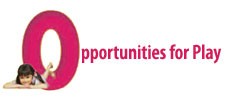From the day children are born, they enter a new and colourful world of discovery, where everything is new and unfamiliar. To get to know themselves, others and their worlds, they need to feel safe and confident. Creating rich, stimulating, engaging environments for them to explore will ensure that they are active participants in their own learning.
The Early Learning and Child Care Curriculum is based on the vision all children can grow to their fullest potential with dignity, a sense of self worth, and a zest for living and learning. To reach this point requires a holistic approach to early learning and care, where all of the curriculum elements function in harmony with each another. The curriculum promotes healthy development by emphasizing responsive relationships, stimulating environments and learning through play.
Based on up-to-date research on how to maximize children’s learning, the curriculum appeals to the uniqueness of each and every child. This factor contributes to the innovative nature of the curriculum, and allows its contents to be practised across a variety of cultural, linguistic and social backgrounds.
By implementing its teachings at the earliest age possible, children are prepared for a smoother transition into primary school, and given a foundation of learning that will support them throughout their lives.




